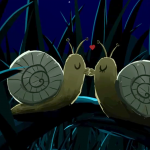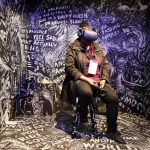Simpler, Better, Faster: A Conversation with Lip Comarella
Simpler, Better, Faster: A Conversation with Lip Comarella
[Lip will be speaking tomorrow April 25 at Symposium Digitale Realitaten in Vienna. More info at the bottom page]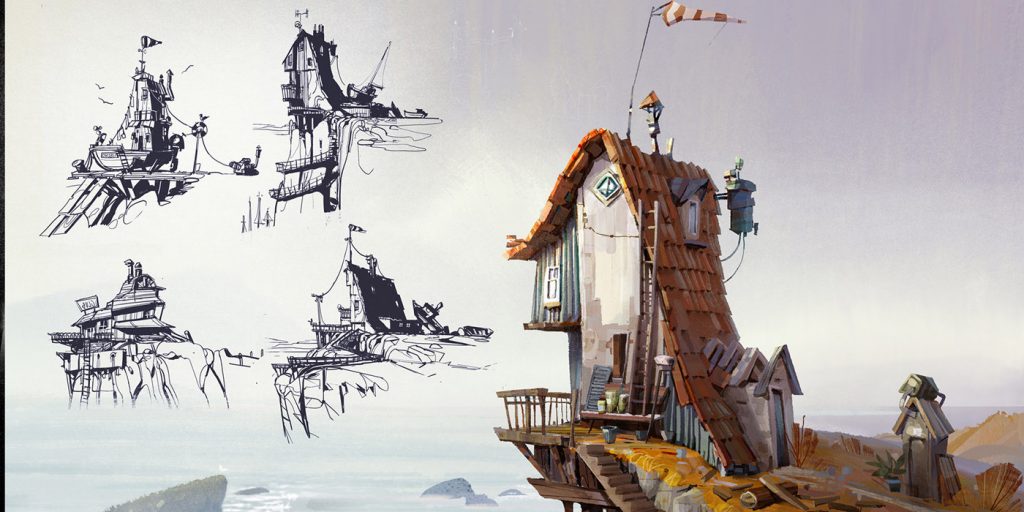
A: Hello Lip, please tell us a bit more about you. What is your background? Did you study visual arts?
L: Not really [laughs]. My parents forced me to have a very classical education. I studied Latin and ancient Greek in high school. But when I was 18, I realized that I enjoy to visualize my ideas and thoughts. So I went to the University and studied advertising. I was heading toward more of a copywriting agency type of occupation until I felt the need to carry my ideas until completion. I was tired of giving them away too soon because I found my stories never really turned out the way they should be. Since the softwares got easier and more accessible, I managed to find the right moment to jump in and learn the technical skills to do it on my own.
A: Did you meet with your partner Simon Gressier at the university? How did you two connect?
L: Our story is funny. I come from the southern part of the Alps which is in Italy and he comes from the northern part of the Alps, in Austria. So there’s basically one mountain separating us. By air we’re not far apart, but by car it takes a while! We thought there was something cool about that (and of course we both like the same kind of way of telling stories). We’ve met by accident when Simon was doing motion design in Vienna. He was not very happy with the type of work he was doing so I proposed him to work together. He said ok and straight up we opened Salon Alpin Studio. We wanted to do our own things and see how it would go. We’ve started by making the short film “Much Better Now” which is a 6 minutes short stop motion CG hybrid. A very personal story that works in a broad sense. We’ve used what we could afford at the time to do it: mostly paper and a little bit of Maya and After Effects. What I like about this short is that you can see this sort of semi amateurism trying to make sense, the thin line between improvising and actually knowing what you’re doing. We’ve worked on it on evenings and weekends for two years. Since then we never stopped. Now we are contracted as a directing duo at Passion pictures, in the UK. I’m really happy they took a chance on us, Passion is a great place to be.
A: Do you have more success with carrying your ideas until completion now?
L: Well you know, it’s always a give and take. People are coming to us for our vision so most of the times there’s a very good range of possibilities for us to express our sensibilities. Sometimes not, but that’s fine!
A: When did VR pick your curiosity?
L: We were sharing offices with the dev studio Broken Rules and they had an Oculus Development Kit but rarely really did anything with it. I was curious, picked it up, and realized that … Let’s put it that way: I’ve never considered myself a strong droughts man. My drawings skills are ok but they’re not great at all (because I’m just cheating my way to do what I want to say). But in VR, I can finally draw whatever I can think of. If I’m drawing in my sketchbook, I feel very limited to what i can really visualize. It’s because I have to translate it from 3D in my head to 2D on paper. The technical skills required to do that are so much work compared doing it in a 3D environment directly. For example, we were at the beach with my brother. He’s not a drawer at all, he’s a lawyer. I was telling him about how I’m using VR and then I thought of something. I gave him a piece of paper and asked him to draw me a car. He was kind of lost representing it in 2D. He drew something that didn’t really look like a car [laughs]. But then I asked him to sculpt a car made of sand. He knew exactly how to do it, no perspective problems this time. He remembered the lights , the mirrors and all the details, the proportions, etc. He had in mind a very precise image of the car but just couldn’t express it in 2D.
“To abstract something that is in your head in 2D, might it be on a screen or a paper, is a hard task to do and requires a lot of practice if you want to stay true to the original thought.”
A: What is your favorite app to design in VR? Seems like you spend most of your time in Quill right now.
L: Painting in Quill is such a pure way to express your ideas. I love it. I never go into details too much and always force myself to stay loose. I try to quickly visualize the idea and never fall into the danger of overdoing stuff or being photorealistic. That helps me to stick with a strong composition, idea, or story. My goal with VR is not to finish something but to visualize something that holds a vision for something bigger. We’re trying to come up with a style that is actually usable for production in Quill but at this moment it’ not very much about the tools, they will get better in a heartbeat.
A: What do you think of the use of VR for telepresence, especially in professional settings? Are you exploring this path as well?
L: Yes, absolutely. We’re trying to incorporate that into a specific work pipeline. In Medium I can share a sculpting room or jump in with my buddy and do work remotely. Usually we would do a screen share. Now we can use Medium to sit down a minute and sketch our ideas in 3D. I think the main usage for now is the very first brainstorming phase, locking ideas while we can both at the same time show what we have in mind. It really helps to be in a room together where both can draw. It sounds very simple, but I hope other programs will develop this because it helps a lot!
A: Can you share with us some bites of your standard workflow? How do you use VR in your daily work?
L: If I had to start a piece today, I would start with maybe half an hour in VR, then bring it back to photoshop or another application like Marmoset and continue from there. Now I always start in VR because they are no limits and I don’t have to make it pretty yet. I will try to stay on top of the progress and see what comes new to find new shortcuts to be even more efficient. Time is short we must be fast!
“Now I always start in VR because they are no limits and I don’t have to make it pretty yet.”
A: From what I understand, what you really like about VR right now is how fast it allows you to sketch ideas and to share them.
L: Isn’t it all about finding a way to be faster and more precise telling what you want to say? As well as translating more accurately what you have in mind versus what you get at the end? Ten years ago, I was drawing with a marker and what I had in mind was very different than what I had on the paper! Because I was a bad drawer, and I still am. Now that I started to use more 3D, things get closer and closer to what I’d like them to be. I really think VR adds another extra bit of immediate result. It’s a great way to be more accurate and to not get lost in technics, or just fail because you don’t know how to draw perspectives, position shadows, etc. At the end of the day it’s not that important how it was made, as long as it’s good.
L: I really like how these tools and the features that come with it inform my original ideas. For example, I sometimes end up changing my composition entirely or finding a much better idea just because I have the freedom to pan cameras, or to bring the light from one side to the other. Of course, at some point you have to make up your mind because a lot of options is a danger if you don’t know what you’re doing. It’s always a danger to lose yourself in infinite possibilities but if you stick with what your story is asking you, then you will always have a guide. Sometimes you just can’t think about the best composition, you must look for it, and then you find it. It’s a process that is invaluable.
“It’s always a danger to lose yourself in infinite possibilities but if you stick with what your story is asking you, then you will always have a guide.”
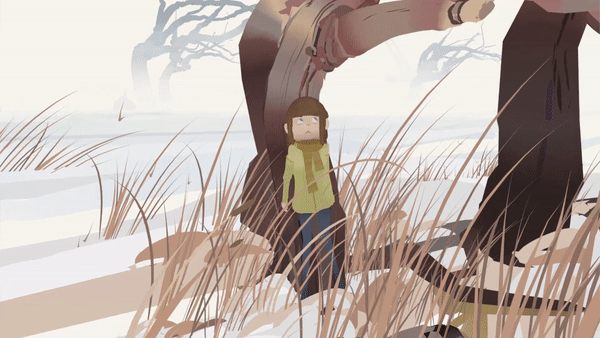
A: Your works are often driven by natural elements such as mountains, water. Is it a way for you to escape from a ‘too much tech’ feeling?
L: It’s a good question, I don’t know. I come from the mountains. I’m completely fan of hiking and seeing the countryside, but I probably wouldn’t appreciate it as much if my daily job was not all about virtuality. I cannot think of a world I would be only on computers, that would be alienating me.
A: Ultimately, what are you trying to achieve by telling your stories?
L: It happened to us a couple of times to come up with these kinds of ideas where the audience really understands what we meant and feels as strongly as we did. We want to communicate feelings that we feel ourselves. Whatever the tool is, we wish to convey what we think is great. It sounds a little bit cliché but if you’re out just for the pretty picture, I think it’s a waste of time.
“How can we communicate our thoughts and ideas fastest and in a clearer way? This is all there is to say.”
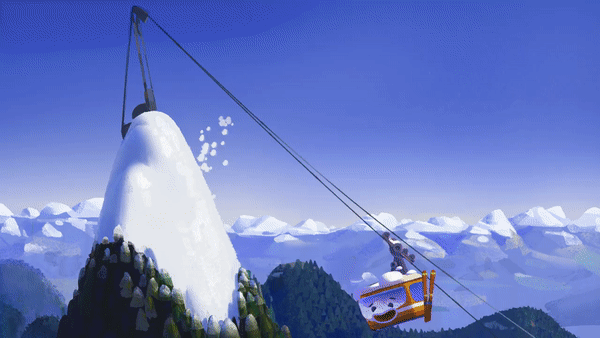
A: Anything else you’d like to say or tell the new comers and/or the community?
L: Mmh, I know how it feels to be limited by your own lack of skills and today’s tools are taking away a little bit of that barrier. And the more the software helps you to get rid of the technical problems of representation, the more creative you can be. While the tool is the same, it’s very fun to see that everybody has its own take to how to use Quill. It wasn’t at first, but now I see more and more people having their own style. It’s so refreshing. I follow the group and what is going on with a lot of attention.
A: Thank you Lip! Looking forward to catching up with you soon again!
Lip will be speaking tomorrow April 25 at Symposium Digitale Realitaten in Vienna. More info here.
Find Lip Comarella and Salon Alpin online:
ArtStation
Facebook
Salon Alpin
Instagram


